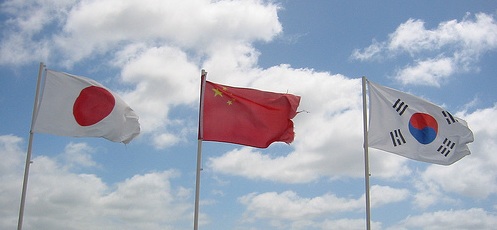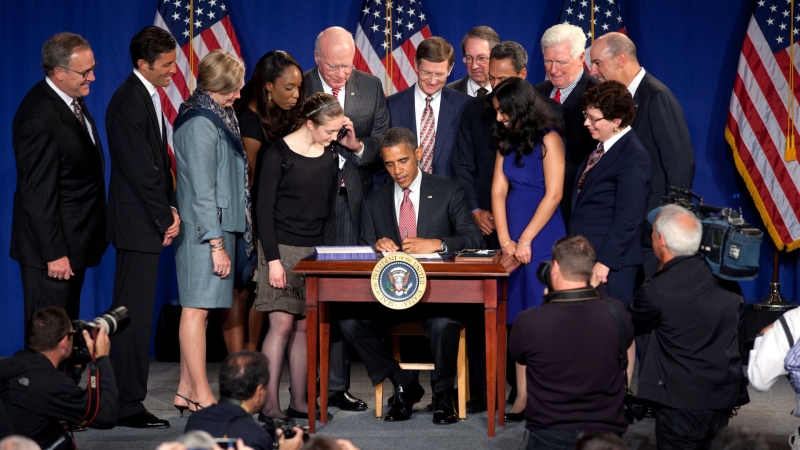 One of our most successful presentations on business trips to Asia in recent years was the one about “Dos and Don’ts in European Filings” covering many practical hints that should be observed – possibly already at the drafting stage – upon filing direct EP applications with the EPO or entering the EP regional phase via the PCT route.
One of our most successful presentations on business trips to Asia in recent years was the one about “Dos and Don’ts in European Filings” covering many practical hints that should be observed – possibly already at the drafting stage – upon filing direct EP applications with the EPO or entering the EP regional phase via the PCT route.
At KSNH we are very happy to announce that an article by my colleagues Jochen Höhfeld and Shino Tanaka summarising this lecture has been recently accepted for publication by major IP journals in Japan, China, and Korea:
Japanese:
JPAA Journal “Patent”, Vol.66, No.4, 2013.3, pp. 14-19
China IP News, 2013-05-31, issue 1427, p. 8 (part 1)
China IP News, 2013-06-07, issue 1429, p. 8 (part 2)
Korean:
KPAA Association Journal, May 20, 2013, pages 6, 7
(see also here, No. 162 제810호, 2013.05.20)
Basically, the articles cover the following topics:
Claim Drafting
- Limitation of number of claims
- One independent claim per category
- Unity of the invention
- Reference numnerals
- Multiple independent claims
- Functional claim features
- Clarity of the claim language
- Claims in two-part-form (Jepson-type claims)
- Claim amendments
- Number of pages
- Basis for claim amendments
- Discussion of prior art
- Abstract
- Incorporation by reference
Organisational issues:
- Format of pages
- Entering the regional phase before the EPO (Euro-PCT)
- Regional pahse entry with the EPO acting as International Search Authority
- Designation of the inventor
- Divisional applications before the EPO
The final package of the Leahy-Smith America Invents Act (H.R.1249, pdf) will enter into force on 16 March 2013 (for a list of amendments and their effective dates, see here). By this date, the most significant amendments of the new Act will enter into force, namely the transformation from the traditional first-to-invent regime to the new first-inventor-to-file regime.
Besides reducing the USPTO’s backlog of approx. 680.000 patent applications and improving patent quality, the main objective of the America Invents Act is to harmonise the US patent system better with international patent law standards and by that facilitate second filings of US applicants in foreign jurisdictions.
This is indeed a brilliant idea, not only for US applicants but also for European applicants and practitioners, as it will align the US system closer with the European patent system. However, event for those legal instruments that are clearly adapted to the European point of view, important differences remain. Some of those tiny differences that may have a huge impacts on practice are outlined below:
On March 16, 2013, the final (third) package of the Leahy-Smith America Invents Act (H.R.1249, pdf) will enter into force. This will include the transition from the traditional US fist-to-invent system to the first-to-file system as used in the rest of the world. In a recent press release the USPTO announced publication of the
- Examination guidelines for implementing the first inventor to file provisions and the
- Final rules to implement the first inventor to file provisions.
On this blog’s German sister blog ksnh::jur we recently published a series of three postings dedicated to the changes the America Invents Act causes to US patent law. As this piece of US legislation implements one of the most important reforms of internation IP law in recent years, its provisions, legal effects and possibel shortcommings have been extensively – and partly exellently – discussed by so many US blogs that there surely is no need to add another synopsis on a Europe-focussed IP blog like this.
However, as a large portion of our regular readers live and practice in the German-speaking part of Europe, we thought that some of them might appreciated to read about this topic in their mother tongue. The three articles are structured parallel to the three packages of the AIA that enter(ed) into force on 16 Sep 2011 and 16 Sep 2013 and on 16 Mar 2013:
Die Änderungen im US-Patentrecht durch den ‘America Invents Act’
 According to Chapter II PCT (International Preliminary Examination) the International Preliminary Examination Authority (IPEA) draws up the International Preliminary Examination Report (IPER) which is forwarded to the elected national patent Offices upon national phase entry. Since most national Offices use the IPER as a basis for their substantive examination, it is vital for the applicant that a positive IPER is established.
According to Chapter II PCT (International Preliminary Examination) the International Preliminary Examination Authority (IPEA) draws up the International Preliminary Examination Report (IPER) which is forwarded to the elected national patent Offices upon national phase entry. Since most national Offices use the IPER as a basis for their substantive examination, it is vital for the applicant that a positive IPER is established.
Based on Rule 66.4 PCT, reading
Additional Opportunity for Submitting Amendments or Arguments:
(a) If the International Preliminary Examining Authority wishes to issue one or more additional written opinions, it may do so, and Rules 66.2 and 66.3 shall apply.
(b) On the request of the applicant, the International Preliminary Examining Authority may give him one or more additional opportunities to submit amendments or arguments.
the EPO now announced an important procedural change for international applications entering Chapter II PCT before the EPO functioning as IPEA (see Notice from the EPO dated 31 August 2011). According to that revised practice, the EPO obtains discretion to issue additional written opinions before establishing the IPER, either on its own initiative or upon applicant’s request. This will give applicants more control and influence and better chances to enter the national phase with a positive IPER.
The k/s/n/h::law blog
Some of the patent attorneys of the KSNH law firm have joined their efforts to research what is going on in the various branches of IP law and practice in order to keep themselves, their clients as well as interested circles of the public up to date. This blog is intended to present results of such efforts to a wider public.
Blog Archives
- November 2013 (2)
- October 2013 (1)
- September 2013 (1)
- August 2013 (2)
- July 2013 (3)
- June 2013 (5)
- March 2013 (5)
- February 2013 (4)
- January 2013 (5)
- December 2012 (5)
- November 2012 (5)
- July 2012 (5)
- June 2012 (8)
- May 2012 (5)
- April 2012 (3)
- March 2012 (4)
- February 2012 (5)
- January 2012 (6)
- December 2011 (12)
- November 2011 (9)
- October 2011 (9)
- September 2011 (4)
- August 2011 (7)
- July 2011 (4)
- June 2011 (1)
Blog Categories
- business methods (6)
- EPC (7)
- EPO (12)
- EU law (92)
- ACTA (8)
- CJEU (4)
- Comitology (1)
- competition law (2)
- Enforcement (6)
- EU Unified Patent Court (62)
- FTA India (1)
- TFEU (2)
- Trade Marks (5)
- European Patent Law (37)
- German Patent ACt (PatG) (1)
- German patent law (5)
- Germany (6)
- Pirate Party (3)
- International Patent Law (4)
- PCT (2)
- IP politics (10)
- licenses (2)
- Litigation (5)
- Patentability (7)
- Patents (12)
- Piratenpartei (2)
- Software inventions (10)
- Uncategorized (9)
- Unitary Patent (24)
- US Patent Law (4)
Comments
- kelle on Germany: Copyright Protection More Easily Available For Works Of “Applied Arts”
- Time Limits & Deadlines in Draft UPCA RoP: Counting The Days - KSNH Law - Intangible.Me on Wiki Edition of Agreement on Unified Patent Court Agreement (UPCA)
- Time Limits & Deadlines in Draft UPCA RoP: Counting The Days | ksnh::law on Wiki Edition of Agreement on Unified Patent Court Agreement (UPCA)
- Wiki Edition of Agreement on Unified Patent Cou... on Wiki Edition of Agreement on Unified Patent Court Agreement (UPCA)
- European Commission Takes Next Step Towards Legalising Software Patents in Europe | Techrights on EU Commission publishes Proposal of amendend Brussels I Regulation for ensuring Enforcement of UPC Judgements
Blogroll
- 12:01 Tuesday
- America-Israel Patent Law
- Anticipate This!
- AwakenIP
- BlawgIT
- BLOG@IPJUR.COM
- BP/G Radio Intellectual Property Podcast
- Broken Symmetry
- Class 46
- Director's Forum: David Kappos' Public Blog
- Gray on Claims
- I/P UPDATES
- IAM Magazine Blog
- Intellectual Property Intelligence Blog
- IP Asset Maximizer Blog
- IP CloseUp
- IP Dragon
- IP Watch
- IP Watchdog
- IPBIZ
- ipeg
- IPKat
- ITC 337 Law Blog
- Just a Patent Examiner
- K's Law
- MISSION INTANGIBLE
- Patent Baristas
- Patent Circle
- Patent Docs
- Patently Rubbish
- PatentlyO
- Patents Post-Grant
- Reexamination Alert
- SPICY IP
- Tangible IP
- The 271 Patent Blog
- The Intangible Economy
- THE INVENT BLOG®
- Think IP Strategy
- Tufty the Cat
- Visae Patentes
The KSNH blogging landscape


This blog and the German-language sister blog k/s/n/h::jur link to the two popular and privately run blogs IPJur und VisaePatentes and continue their work and mission with a widened scope and under the aegis of our IP law firm.
ksnhlaw on Twitter
- No public Twitter messages.
 KSNH::JUR Feed (german)
KSNH::JUR Feed (german)- Ist Verschlüsselung passé? September 6, 2013Auf verschiedenen Feldern beruflicher Praxis ist dafür zu sorgen, dass Kommunikation vertraulich bleibt. Die trifft beispielsweise für Ärzte zu, aber auch für Anwälte, darunter auch Patentanwälte. Einer der zahlreichen Aspekte, die in diesem Zusammenhang eine Rolle spielen, ist die Technik, um die Vertraulichkeit beruflicher Kommunikation sicherzustellen. Wa […]
- EU-Einheitspatent: Demonstrativer Optimismus und Zahlenmystik allerorten – Naivität oder politische Beeinflussung? June 26, 2013Nach mehreren vergeblichen Anläufen zur Schaffung eines EU-weiten Patentsystems wurde 1973 als Kompromiss das Europäische Patentübereinkommen unterzeichnet, welches unabhängig von der seinerzeit noch EWG genannten Europäischen Union System zur zentralisierten Patenterteilung mit nachgeordnetem Einspruchsverfahren durch das Europäische Patentamt schuf. Wie wi […]
- Moderne Zeiten oder: DPMA und Patentgericht streiten über die elektronische Akte April 25, 2013Bekanntlich hat das Deutsche Patent- und Markenamt (DPMA) im Jahre 2013 mit der rein technischen Fertigstellung der Einrichtungen zur elektronischen Akteneinsicht einen wichtigen Meilenstein seines Überganges von der Papierakte zur “elektronischen Akte” erreicht. Im DPMA werden aber bereits seit dem 01. Juni 2011 Patente, Gebrauchsmuster, Topografien und erg […]
- Gutachten zu Forschung, Innovation und technologischer Leistungsfähigkeit Deutschlands 2013 March 11, 2013Unter dem Datum vom 28. Februar 2013 ist die Bundestags-Drucksache 17/12611 veröffentlicht worden Sie trägt den Titel Unterrichtung durch die Bundesregierung - Gutachten zu Forschung, Innovation und technologischer Leistungsfähigkeit Deutschlands 2013. Die Bundesregierung legt dem Deutschen Bundestag seit dem Jahr 2008 […]
- 3D-Printing: Zum Filesharing von 3D-Modelldaten February 25, 2013In meiner kleinen zuvor angekündigten Reihe über rechtliche Aspekte des 3D Printing komme ich heute auf die Frage zu sprechen, ob die Hersteller von Gerätschaften es hinnehmen müssen, wenn Ersatztreile davon – vom Brillengestell über Smartphone-Gehäuseteile bis hin zu Rastenmähermotor-Abdeckungen – gescannt und die daraus […]
- Ist Verschlüsselung passé? September 6, 2013





